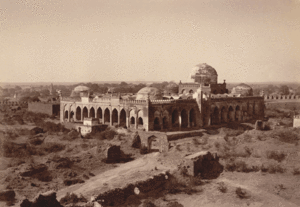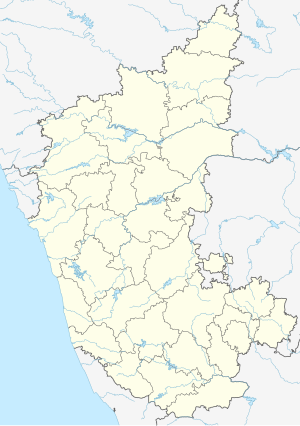Gulbarga Fort
| Gulbarga Fort | |
|---|---|
| گلبرگہ قلعہ | |
| Part of Gulbarga | |
| Gulbarga, India | |

Gulbarga Fort
|
|

Great Mosque (Jami Masjid) in Gulbarga Fort
|
|
| Coordinates | 17°20′26″N 76°49′52″E / 17.3405°N 76.8311°ECoordinates: 17°20′26″N 76°49′52″E / 17.3405°N 76.8311°E[1] |
| Type | Fort |
| Site information | |
| Controlled by | Government of Karnataka |
| Open to the public |
Yes |
| Condition | Ruins |
| Site history | |
| Built | Fourteenth century |
| Built by | Sultan Al-ud-din Bahmani of Bahmani Sultanate in 1327 and Adil Shah |
| Materials | Granites and lime mortar |
The Gulbarga Fort is located in Gulbarga City in the Gulbarga district of North Karnataka. It was subsequently significantly enlarged in 1347 by Al-ud-din Hasan Bahmani of the Bahmani Dynasty after he cut off his ties with the Delhi Sultanate; Islamic monuments such as mosques, palaces, tombs, and other structures were also built later within the refurbished fort. The Jama Masjid built later, within the fort, in 1367, is a unique structure built in Persian architectural style, fully enclosed, with elegant domes and arched columns, which is unlike any other mosque in India. It was built to commemorate the establishment of the dynastic rule of the Bahmani kingdom at Gulbarga fort between 1327 and 1424. It remained the capital of the Bahmani Kingdom till 1424 where after the capital was shifted to Bidar Fort, as Bidar had better climatic conditions.
Early history of the region dates back to the 6th century when the Rashtrakutas ruled over the area. The Chalukyas won back their domain and ruled for over two hundred years. The Kalachuris of Kalyani succeeded them and ruled till the 12th century. At the end of the 12th century, it came under the reign of the Yadavas of Devagiri and the Hoysalas of Halebidu . During this period, the Kakatiya dynasty, kings of Warangal were also powerful and took control of the present Gulbarga district and Raichur District.
...
Wikipedia

